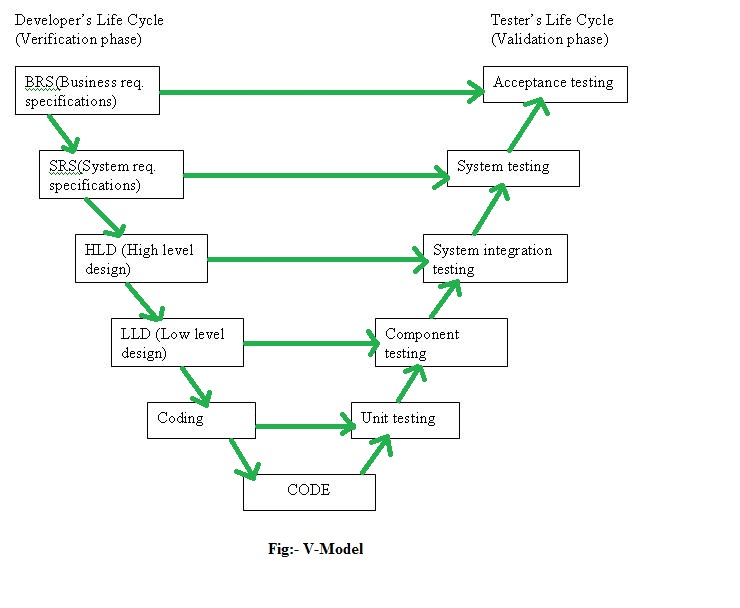V-Model stands for the ‘Verification’ and ‘Validation’ Model. Same as the waterfall model, V-Model also applied as a consequent life cycle model. In the V-model, every stage should be accomplished ahead the next stage starts. Testing phase is executing parallelly of every development phase.
There are different-different phases in the V-model. Few phases are described as below:-
Requirements:- Requirements means BRS (Business Requirement Specification), SRS (System Requirement Specification) start the V-model same as the waterfall model. In the V-model normally we created the test plan ahead the development began.These test plan concentrates on the main functionalities which were set in the time of requirements gathering .
High-Level Design:- This phase is normally concentrates on the system design and architecture. These high level design furnish the summary of system, platform, applications, process etc.
Low-Level Design:- In this phase the original software elements are designed. LLD describes the original logics for all elements of the application.Component testing is performed under this level.
Coding:- This section is displayed at the bottom of the V-model image. As per the SRS, designs are changed into code style by the programmers.
Below is the image of V-Model:-

Advantages Of V-Model:- There are several types of advantages when using V-model. Few advantages are mentioned as below --
- V-model is very easy and simple to utilize
- V-model is very good for the small projects where all requirements are very clear and easily understandable .
- When V-model is utilized then issues are found at the early level.
Disadvantages Of V-Model:- There are also many disadvantage of the V-model. Few of them are mentioned as below --
- Very inflexible and lowest adaptable.
- In the V-model, when there will any changes during the development then need to update all the testing documents besides SRS docs.
0 Comment(s)